|
with Kim Rodgers Chocolate ChemistryThis week in Chemistry the students met in groups to design an experiment which would answer the question: “Do some M&M colors dissolve in water faster than others?” We talked about the variables used in our experiment from the week before and how we can make the variables more explicit, but only change one aspect (the color of the M&M) in order to make this a fair experiment. All the groups came up with their own version of the experiment and carried them out. Some used stopwatches to make the time more accurate. Some chose to draw a picture of what the M&M looked like after soaking for a certain amount of time, while others decided to track the time it took for the ring of shell around the outer edge of the M&M to dissolve and reveal the chocolate underneath. All the groups ranked their results in terms of how quickly the shell dissolved. The group’s data didn’t always agree with each other. We talked about how we would need to replicate the experiments to find out if color was a factor in determining the time dissolving took to occur. Next week we’ll take a look at the question: “What would the colors look like if we placed two or more M&Ms in a plate of water?”, coming up with hypotheses and designing experiments to examine this aspect of M&Ms. Don't Blame Me…The Flea Did It!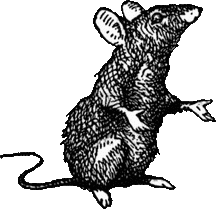 In the Middle Ages this week we learned about the Black Plague, also known as the bubonic plague, and how it changed many aspects of society at the time. People near the Black Sea began hearing rumors of sickness and death. Soon, the people in that area began getting sick and dying. They tied herbs and flowers into little sachets they could wear around their necks to protect themselves from the smell. They believed that the Italian traders and merchants had brought the sickness, so they drove them out of their town and back to their ships, throwing the dead bodies of those who had died into catapults and hurling them over their walls. When they arrived home the people of Italy didn’t allow them to get off their ship. Most on board were near death or had died. Despite this, the sickness soon appeared on land and spread through Italy and into Europe. Today we know that the bubonic plague was spread by an infection carried by fleas that lived on rats. Because grain was with the travelers, the rats followed along, bringing the sickness with them. Everywhere there was food available the sickness spread. Even from the ships, the rats crawled down the ropes onto land. During the Middle Ages garbage and leftover food was left in the streets, which became a breeding ground for rats...and the plague. When the plague finally ended it was a very different world. One out of every three people had died. Whole villages had been wiped out! Noblemen who survived wanted their fields to be farmed, but they had a hard time finding any peasants who could do the work. Farm workers and craftsmen were in high demand and paid well for their work because of it. Because of that the noblemen grew poorer and poorer and their estates became smaller and smaller. Peasant survivors worked the land of unclaimed houses and took over the houses and possessions, allowing them to become richer and richer. The feudal system began to fall apart. Playing with the Plague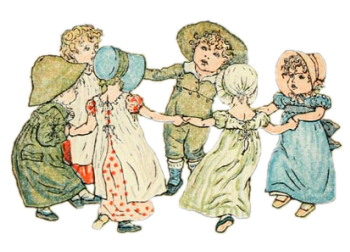 We also learned that the nursery rhyme, "Ring-Around-the-Rosy," probably originated during the time of the black plague. For our activity we did a Black Plague Simulation. Bags were laid out around the room based on a map of the area. Each bag had a name of a city that had been affected by the plague. Inside the bag were mostly white beans, with a very small number of pinto beans (to represent cholera, which was a problem from the water) and red beans (to represent the plague). Students were sent on a journey with a travel journal and directions. At each stop they rolled a die to determine the amount of nights they were lodging in that town. They were to pick out that same number of beans from the bag without looking. If they picked all white beans they were safe and could continue traveling along. If they picked a colored bean they had special instructions. At the next town they rolled their die. If they rolled a 1, 2, or 3 they had to add one colored bean to the bag. If they rolled a 4, 5, or 6 they added two. This served the purpose of representing how sickness spread. At the next town they wrote an “X” on the bag to show that someone died there. If they came to me before writing the “X” and could roll two “1”s in a row then they could survive. This was to show that there were a very few who contracted the plague and lived. We may continue the simulation in class if there is time. The sickness was just beginning to spread at the end of class time. Three out of the ten students participating had experienced an untimely death. One thing that students mentioned when we talked about the experience at the end was the fact that they felt bad they had infected others. We talked about how illness often spreads before anyone realizes they are sick, which was deadly in this case during the Middle Ages. Shirts and Last Day Announcement The students should have brought home the shirts we had completed. I admit... this activity didn’t come off as I had hoped. Ha! Here is the site for directions on how to wash it. I also realized after buying the shirts, that they were much smaller than I thought they would be. Sorry about that! I hope they can give them to a smaller friend or sibling if they wash out alright. Let me know how it goes! Next Monday is our last class before the final class of the year (Memorial Day separates these two dates). On June 1st, the last day of class, the middle school students will be performing “Good Masters, Sweet Ladies,” which is a group of monologues representing people from the Middle Ages and the different roles they played during the time period. I think it would be a valuable experience to have our class attend the performances. That same day the middle school class will be giving presentations on genetic mutations. I’m thinking I’ll do one more Chemistry class instead of going to these presentations, but if you think it would be valuable to go to them please let me know as I’m up for either one. See you Monday! with Angela Harris Student Sequels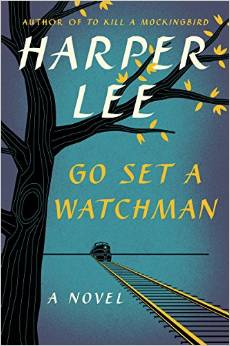 Pre-order from Amazon! Pre-order from Amazon! We picked up where we left off last week with a discussion of the many different symbols found within To Kill a Mockingbird. Students have been working on an essay regarding the most obvious symbol of the mockingbird, but there are several others that are less obvious. After understanding these additional symbols, students were challenged to write the opening paragraph to their own sequel to TKAM! It wasn't necessary to know the entire plot of their sequel, and as a prompt, they were to weave in one of the symbols from the novel that we had just discussed. This opening paragraph was to be short--between three and five sentences, and could pick up at any time in the future--one day after the end of the novel or ten or twenty years after--it was up to students to decide! After only five or six minutes, students came up with some WONDERFUL sequels! I was really impressed with their creativity and mentioned that if anyone would be willing to continue his/her story over the summer, I would love to read it. In July we can read the "real" sequel together and see if there are any similarities! I would love it if someone would take me up on my challenge! :) Analysis Chapters 25-31We finished our discussion of the novel by talking about how the different characters were affected by the outcome of Tom Robinson's trial. We reviewed the end of the novel and the events that took place which finally revealed Boo Radley to Scout! In the end, Scout can finally walk in Boo Radley's shoes. She can understand his point of view both as a human being and physically, as she stands and views the town from his front porch. Good stuff! Final Essay on Education (Thesis with Tension)Essays on the mockingbird symbol are due May 20. I posted a handout to the Community Page which you will need to answer part of the final essay prompt on the topic of Education. Much is said about formal schooling in the novel. Harper Lee gives a very critical view of methods of teaching and of some educational jargon in Chapters 2, 3 and 4, and Atticus voices his criticism of some educational philosophies in his speech to the jury in Chapter 20. Certainly Scout is depicted as learning more from Atticus and Calpurnia and from her experiences outside school than from her formal schooling. The scenes at school provide a direct counterpoint to Atticus's effective education of his children: Scout is frequently confronted with teachers who are either frustratingly unsympathetic to children's needs or morally hypocritical (Miss Caroline and Miss Gates). Remember: we aren't just discussing Harper Lee's views as expressed through the novel; you're going to take a position and agree or disagree with her. Please refer to the essay outline I provided you a few weeks ago to help with crafting this essay. It is due by May 31 and should include a thesis with tension and a Works Cited (MLA Format). Final QuizThe final quiz will be provided in the form of an electronic multiple choice test via WizIQ! I will send you a link to the test when it's ready. You should complete it before our last class on May 27. The final quiz will include story content, vocabulary, information from the Key Facts handout (literary analysis), information from the Great Depression handout (especially the timeline), and a few questions derived from our in class topics, such as Jim Crow and the Scottsboro Boys Trials. All handouts that you need to study are on the Community Page; please let me know if you can't find something and I'll email it to you directly.
Last class on May 27! What a journey this has been--see you then! with Leigh Ann Yoder Darwin's Theory and Evidence of EvolutionClass discussions were quite engaging this week. First we focused on Darwin's actual job on the HMS Beagle, as well as his discoveries. We spent a good deal of time discussing what a Scientific Theory actually is and how it differs from a Scientific Fact. We also discussed Natural Selection as nature's process of Selective Breeding. Next, we delved into the scientific evidence which supports Darwin's Theory of Evolution. I did point out that the text book did not discuss evidence that does not support Darwin's Theory, and the fact that there are many people who do not support his theory. The students seemed quite competent in the material, vocabulary and the concepts. Interestingly, the students asked for my own personal beliefs as they pertain to the topic. I did share since they asked, and I explained how my beliefs help me stay true to both my religion and my scientific understandings. I urged them all to speak with their own families, and ask these same difficult questions. I find the students are eager to make sense of the science they now have a solid understanding of. It is a great opportunity for educated dinner discussions! Bird Beak Adaptations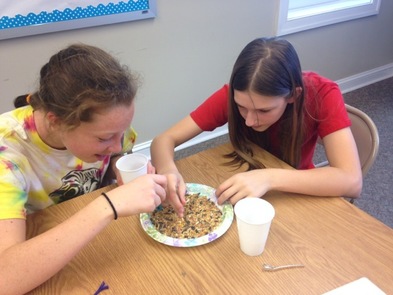 In this fun activity students were given a plate of seeds and 'insects'. They were also provided with four different tools to use as beaks. Choosing one 'beak' they had one minute to pick up as many seeds as they could and place in a cup. They repeated and tried to pick up 'insects'. They tried multiple beaks and at the end voted. The class was almost unanimous on the best beak for seeds and the best beak for 'insects.' This illustrated Darwin's observations of adaptations: a trait that helps an organism survive and reproduce. Nature at Work LabThe purpose of this lab was to see how a species changes over time and how its environment can influence the changes. Students simulated a population of white and brown mice living in two different environments, white sand and forest floor. They simulated survival rates over several generations. Students were able to collect all of their data, but they did not have time to complete the Analysis and Conclusion. These are to be completed on separate paper for homework. We will be going over these answers in class next week. HomeworkMandatory:
Complete the Analysis and Conclusion section for our lab. Be certain to write answers on a separate piece of paper. Read 5.3 and complete the Study Guide Project: Build your display or presentation Optional: Chapter 5 Key Terms and Connecting Concepts Study Chapter 5 Chapter 5 Review: There will be an optional Chapter 5 review next week at 9:30AM with Kim Rodgers Sweet Test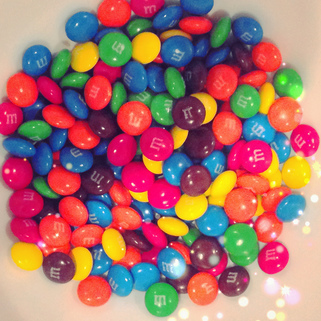 This week in Chemistry we focused on M&Ms. Yum! This was the first class in a series that will finish out our time together at Mosaic this year. The purpose is for the students to understand how to isolate a variable in a testing situation so that the results can be traced back to that variable. The students began by breaking into groups and observing an orange M&M using three of their five senses. We left out hearing and tasting. Then they broke open the M&M and described what they saw. We came back together in a group and shared our observations. Next, we looked at the question “What happens when an M&M is placed in water?” They followed a procedure in which they poured room-temperature water into a plastic plate until the bottom was covered with water. Then they placed the M&M in the center of the plate and observed for about a minute, keeping the water and M&M as still as possible. All of the groups noticed a small ring of color emanate from the M&M, with the circle expanding as time went on. Eventually the color completely came off the M&M and showed the brown chocolate center. We deduced that the water dissolves the sugar and color coating. This is a “property” of the M&M coating. Dealing with Variables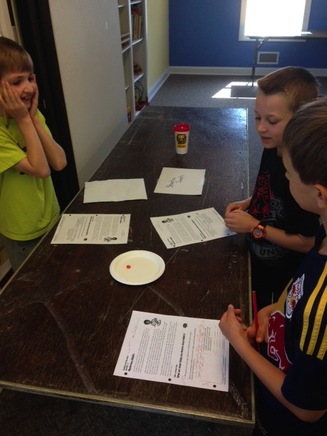 We then discussed the variables involved in this experiment (the number of M&Ms, the color, the type of liquid the M&M was placed in, and the temperature of the water). Any of these variables can be changed to do entirely new experiments. We then brainstormed some questions to investigate over the next couple of weeks. Below are some of the questions:
Next week we will look at the color variable and construct an experiment that is designed to keep all variables the same except for the color of the M&M. Once the groups design an experiment that meets this criteria they will carry out their experiments and compare their results with other groups. The Turks Take OverThis week in the Middle Ages we learned about the fall of Constantinople. The Ottoman Turks were nomads who wandered to the west to avoid the Mongol armies. Trading with Muslim merchants, they heard the Koran read often and became Muslim themselves. They eventually settled near the edge of the Byzantine Empire and raised their young men to become ghazi, soldiers who were dedicated to conquering unbelievers and spreading Islam as their empire grew. Slowly the Byzantine Empire shrank. Only Constantinople was left to the Byzantine emperor. Mehmed the Conqueror became sultan of the Ottoman throne. He spent months pretending to be friendly with the Byzantine emperor, all the while planning to attack. He built a cannon so huge it had to be pulled by a hundred oxen. He also wanted to use gunpowder and had hired mercenaries to build his army. He approached the city with enough soldiers to outnumber the Byzantine soldiers twelve to one! The emperor refused to surrender so Mehmed fired his cannons multiple times against the wall. The walls crumbled slightly, but stood firm. Mehmed knew that the key to winning this battle was to attack from all sides. The problem was getting to the northern wall, which was only accessed by entering the Golden Horn, a harbor on the north side. The entrance was guarded by Byzantine warriors. The Turks solved that problem by hauling their warships out of the water and rolling them on dry land, passing the horrified onlookers behind the walls...70 ships! They dropped them into the harbor. Now they could attack from all sides. After two months food and water were scarce behind the walls. The Byzantine people had always said, “Constantinople won’t fall. Remember: the city is safe until the moon turns dark!” The moon shone brightly one night, but suddenly a shadow came slowly across it. The people thought this was a sure sign of disaster. It was actually an eclipse, but they didn’t know that at the time. The Ottoman Turks took their chance and threw themselves against the walls. Finally, one of the gates to the city was forced open and the Turks took over. Mehmed went straight to the Hagia Sophia and put his throne right in the middle of it, immediately having his soldiers transform it into a Muslim mosque. Sometimes the conquest of Constantinople is referred to as the end of the Middle Ages.
The Turks repaired the walls, laid new stones over the streets, and dug new wells. The Sultan of the Turks was becoming recognized as one of the most powerful rulers in the world. The greatest emperor of all was Suleiman the Lawgiver. Like Justinian, Suleiman gathered all the laws the Ottoman people had and put them together into one code the whole empire could follow. He chose governors who would supervise these laws and make sure the laws were followed. But he wanted to make sure the people were treated well, so sometimes he would dress in disguise and spy on his governors to see they were carrying out justice fairly. He had a spy network throughout the empire to do the same thing. He wanted the people to be safe and healthy. He also rebuilt the walls of Jerusalem after a dream warned him the city might be compromised. He placed statues of lions on either side of the gate to protect the city from intruders. Unfortunately his son inherited his throne after Suleiman died. He wasn’t as strong a ruler as his father, which led to the shrinking of the Ottoman Empire. It lasted for more than 300 years before it disappeared completely. Because cannons were used in the battle and hadn’t been seen before this attack, the students fashioned cannons out of tubes, rubber bands, paper clips, and plastic wrap. When they were done they used ping pong balls to shoot. This activity was a hit, needless to say. They had a fun time trying to make their ping pong ball go the farthest! We also dyed our shirts from last week with the beet juice. They will dry this week and be ready next Monday. with Angela Harris Analysis Chapters 17-24Our discussion of last week's reading led us into an examination of three of the trial witnesses…their testimonies and their demeanor on the stand and a discussion of the events in this section. We finish the reading this week! I then pulled up a map of Maycomb, Alabama. Bearing in mind that Maycomb is a fictional town, we took a "tour" of the town using the map. I think it's fun as we read to have a clear visual of the town. One could say it even serves as a character in the novel. So much happens in the space of a few blocks! For those of you who could not see the last minute of Atticus's closing argument, here it is: If you're interested in seeing the full movie, it's also available on YouTube, but I don't think the quality is all that good. Definitely a NetFlix kind of rental. If you have time after reading the novel this month, you should try to watch the film with your families! PlotTo Kill a Mockingbird begins as a story about curiosity, sibling adventures, and the first school days. The novel evolves into a saga about criminal justice, legal representation, and deep-rooted Southern values. All the events lead to the final, tragic event: Tom Robinson’s guilty verdict. At this tragic moment, Jem forsakes “background” in exchange for how long his family has “been readin’ and writin’.” He believes that literacy allows the Finches to rise above prejudice. In the face of such injustice, Jem realizes that Boo Radley may want to stay inside to avoid the prejudice and injustice prevalent in Maycomb. Next, I quizzed the students on characters and plot for Parts I & II. I had them try to remember the names of all the major and (most) minor characters as quickly as they could and then took another two minutes to complete a plot summary. Plot summaries are very helpful in reviewing events that you have been reading about over a longer period of time. This particular novel is full of characters and events, and it's easy for younger readers to lose their way. The writing tends to be more subtle as well. This was also the case with our last novel, My Antonia. Remember, these two books were not written with young audiences in mind, and although the reading is not overly difficult, it may require students to back up and review certain passages when needed. My "pop quiz" generally showed that students are following the novel, with just a few holes here and there. They were given two or three words and then had to complete the sentence to essentially form a timeline of the plot. Some sentences were easy, and some, a little trickier! Take your time with the last chapters and really let it soak in! The SequelSo, most people have heard by now that there is a sequel to Mockingbird. I took the last few minutes of class to read an excerpt from a New York Times article that was written this February. The new book, Go Set a Watchman, is scheduled to be released this July. I really hope some of our students will be inspired to at least try it when it comes out! There is a bit of controversy surrounding its publication and its sudden appearance is a bit mysterious. First, the new novel was "found" among Ms. Lee's archives by her friend and attorney, Tonja Carter. Ms. Carter thought it was a manuscript for an original version of TKAM, when in reality it was the "incubator" for the famous novel. Harper Lee wrote Watchman first. Her publisher was more interested in the flashbacks to Scout's childhood within Watchman, and asked her to write a novel set in that time frame, not the 1950's as Ms. Lee had originally planned. Since Harper Lee was a new and unpublished author, she didn't argue with the publisher. Watchman is therefore the original story of Scout and Atticus set in the 1950's and focuses on the racial tensions of that era. It's referred to as a sequel because this story occurs 20 years after the first, however, it was written BEFORE it! Second, the bit of controversy surrounding the publication is that Ms. Lee has always despised publicity and is very aged and infirm, not even able to read any longer without a heavy duty reading glass for the nearly blind. She is also thought to be quite congenial and will sign most anything put in front of her (according to some). There was concern expressed by many that it is not her intent to see this novel published, but we'll never know for sure. Her statements about the book have been delivered through her agent and lawyer to the publisher. Her long time protector, sister and attorney, Alice, died at the age of 100+ last fall. Ms. Lee lives in an assisted-living facility and suffered a stroke in 2007. According to her literary agent, Harper Lee has said that Watchman is not a sequel, it is a "parent" to TKAM. I'm so glad our students are reading her novel (or novels) in her lifetime. It is something to remark on and remember, as Mockingbird is one of the most important novels of the 20th century. Will Watchman be one of the most important of the 21st? A lot of people think "lightning won't strike twice." What do you think? Symbolism EssayWe ran out of time to discuss our next essay in detail, so I am posting notes and helps here. You can have two weeks to write this one. I recommend getting it to me by 5/20, to stay on track. The final essay on education should be shared with me no later than 5/31, and you should have completed some research on it by now.
The title of To Kill a Mockingbird has very little literal connection to the plot, but it carries a great deal of symbolic weight in the book. In this story of innocents destroyed by evil, the “mockingbird” comes to represent the idea of innocence. Thus, to kill a mockingbird is to destroy innocence. Throughout the book, a number of characters (Jem, Tom Robinson, Dill, Boo Radley, Mr. Raymond) can be identified as mockingbirds—innocents who have been injured or destroyed through contact with evil. This connection between the novel’s title and its main theme is made explicit several times in the novel: after Tom Robinson is shot, Mr. Underwood compares his death to “the senseless slaughter of songbirds,” and at the end of the book Scout thinks that hurting Boo Radley would be like “shootin’ a mockingbird.” Most important, Miss Maudie explains to Scout: “Mockingbirds don’t do one thing but . . . sing their hearts out for us. That’s why it’s a sin to kill a mockingbird.” That Jem’s and Scout’s last name is Finch (another type of small bird) indicates that they are particularly vulnerable in the racist world of Maycomb, which often treats the fragile innocence of childhood harshly. Read the essay prompt on the syllabus. You are going to support with citations from the text why Boo Radley (who like the bird is a victim of children) and Tom Robinson (the "mockingbird" that it is a sin to kill) are seen as the "mockingbirds" in this story (this can be paragraphs two and three). For your fourth paragraph, you're going to tell me who you think the third mockingbird is (there is no right/wrong answer, and this is widely debated and discussed). If you can make a case for it with a quote from the book and your own reasoning, I'll go with it. Remember, for our purposes, a "mockingbird" is someone whose innocence has been injured or destroyed. There is also a case for Scout to be the third mockingbird. Scout, who is small and plain, but "sings" her own song (the novel). Both Tom and Boo are victims of their own kindness (towards Mayella; towards the children); both are innocent (of rape; of psychopathy); both are victims of prejudice; both are "caged." More subtly, the mockingbird could represent the innocence of childhood which is "killed" in various ways for Scout, Jem, and Dill. The mockingbird first appears in Chapter 10, when Atticus tells the children, "Shoot all the bluejays you want... but remember it's a sin to kill a mockingbird." Miss Maudie explains this is because mockingbirds are neither harmful nor destructive, but only make music for people to enjoy. Its connection with Boo is made clear in Chapter 30, where Scout recognizes that the public exposure of Boo would be "sort of like shootin' a mockingbird." Other than the above instances the symbol recurs in Chapter 21 ‐ waiting for the trial verdict and Chapter 25 ‐ in Underwood's article. So, there are your hints and helps! See you next Wednesday. :) with Leigh Ann Yoder Optional Review SessionThis week's optional review session was slightly different from the past, as the students worked through a variety of more complex problems. Students are working on understanding inheritance methods including: dominant alleles, recessive alleles, codominance, multiple alleles, and recessive sex-linked alleles. They are also learning about several genetic disorders and the complex genetic treatments available. We did not spend as much time on vocabulary terms, and I suggested to those students taking the test that they work independently to learn the vocabulary. Optional Chapter 4 tests are due back next class. Advances in Genetics Not that kind of clone! Not that kind of clone! It seems all of the students are highly interested in this area of our studies. It is fascinating to explore inbreeding, hybridization, cloning, genetic engineering and gene therapy. Some of the highlights of our discussions were on how bacteria are used in the genetic engineering of insulin and how modified viruses are being inserted directly into human bodies to treat cystic fibrosis. Although these are very complex topics, the students all have a strong grasp of them due to their hard work learning about cells, DNA, RNA, and protein synthesis. It is amazing to see all of their knowledge culminate in such an exciting way. I urge you to discuss these topics with your students. I believe you will be quite impressed! The House of Scorpion by Nancy Farmer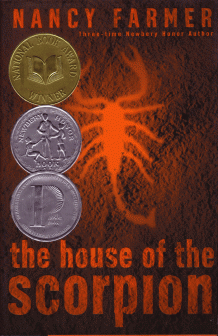 Nancy Farmer's official home page Nancy Farmer's official home page I mentioned to the students this great science fiction novel that addresses the issue of human cloning. Many seemed interested in reading it this summer. I did warn them that they should discuss with their parents as there are some graphic scenes in the novel which could be upsetting to certain students. However, it is also a great novel to read alongside your teen as it opens the pathway to many discussions. For older and/or more advanced students I would also recommend The Immortal Life of Henrietta Lacks by Rebecca Skloot. There is a study guide available for this book that is appropriate for homeschool use. LAB - How are Genes on Sex Chromosomes Inherited?This lab focused on the sex-linked genetic disorders hemophilia and colorblindness. First students used coin flips to collect experimental data for a variety of scenarios. As a class we did an analysis. Next, students were given the opportunity to lead the class in several critical thinking applications. The focus was to use Punnett Squares and/or Pedigrees to determine the probability that a sex-linked trait would be passed down to a child based on family history. These activities simulated genetic counseling. We ran out of time, so the students are to complete the lab at home. HomeworkMandatory:
Complete the lab 'How are Genes on Sex Chromosomes Inherited?' Read 5.1 and complete the study guide Read 5.2 and complete the study guide Project: Decide what information you will present and how you will present it (trifold board or presentation software) Optional: Take the Chapter 4 Test with Angela Harris 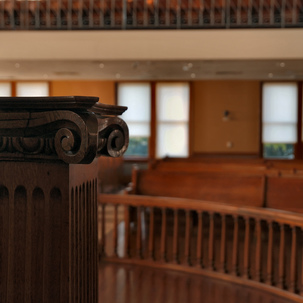 This week's focus was on courage and conflict (both internal and external). We talked about how the different characters are showing courage in ways that are unique to their current situations. Atticus showed courage when he had to shoot the mad dog, and must continue to be courageous in defending Tom Robinson. Mrs. Dubose showed courage when she refused to die addicted to morphine, and Scout and Jem are learning to temper their responses when dealing with the town's backlash against Atticus. For next week, please read through to chapter 24, fill in the Active Reading chart with the additional three witnesses from the trial, and answer the usual short answer questions. Essay reminder is below. Analysis Chapters 9-16Conflict: External vs. InternalAt the heart of every novel is conflict, the struggle between two opposing forces. In an external conflict, a character struggles against some outside force, such as another person, nature, society, or fate. An internal conflict is a struggle between two opposing thoughts or desires within the mind of a character. As you read through to chapter twenty-one, try to notice how the external and internal conflicts introduced in the first section intensify. We then did three exercises that emphasized external vs. internal conflict. In the first, each student was given a scenario and then had to identify whether the conflict was external or internal, and if external, whether it was a conflict between nature, society, or another character. The second exercise required students to then identify four conflicts from the novel that fit the four different possible types of conflicts--they did a great job with this as "conflict with nature" from the book is a little more difficult to come up with. The third exercise allowed students to have some fun completing four fictional scenarios, again, one of each type. By the end, we were pretty confident we could identity all four types of conflict! The Civil Rights MovementWe ended class on a serious note by reading through some basic information on the Civil Rights Movement and then going through the specifics from the Fannie Lou Hamer speech to the 1964 DNC that I posted to the Community Page earlier in the week. This is an incredibly powerful speech and very difficult to listen to. One woman's story of her refusal to be dissuaded from registering to vote--despite threats of harm and repeated physical abuse in jail--is truly sobering. While the characters in our novel show courage in their own ways, Fannie Lou Hamer is an example of a truly courageous human being. If you would like to listen to her speech, it is HERE. Final Expository EssayThere is no essay due next week (hurray!), but that doesn't mean you have nothing to do. :) Please complete the research worksheet that I gave you before next week. We have two more essays to go--one on symbolism within the novel and the final essay on education. All essays should be turned in by May 31.
See you next week--we'll be using our new online classroom! You can visit it HERE. |
Categories
All
Archives
May 2016
|

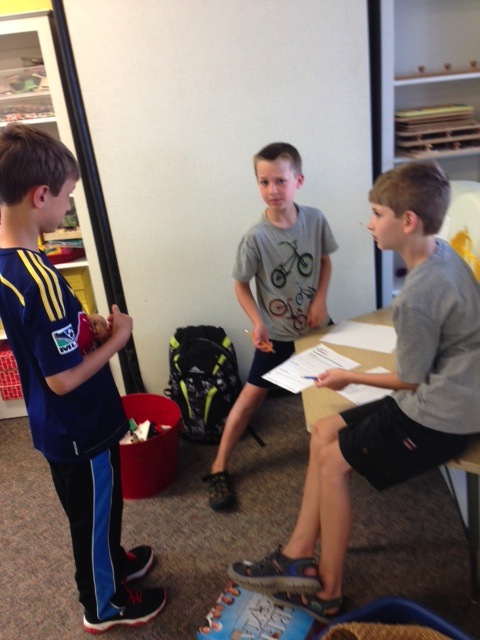
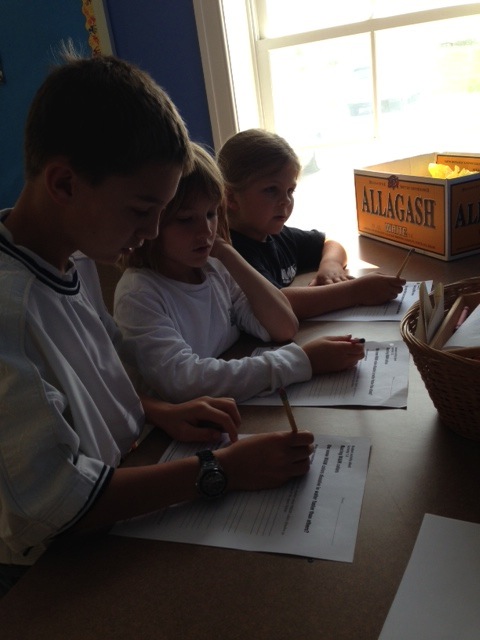
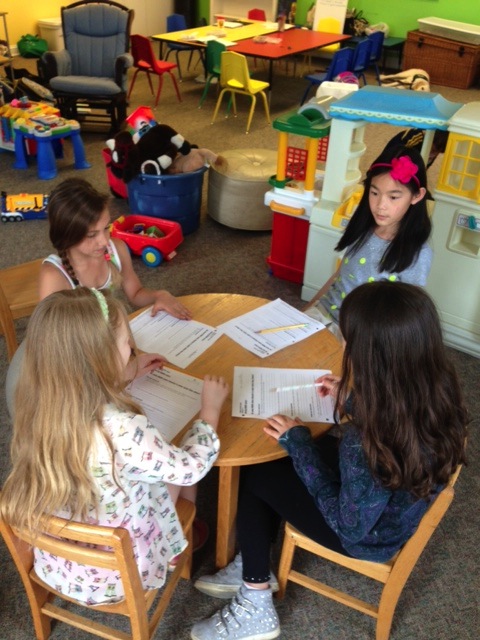
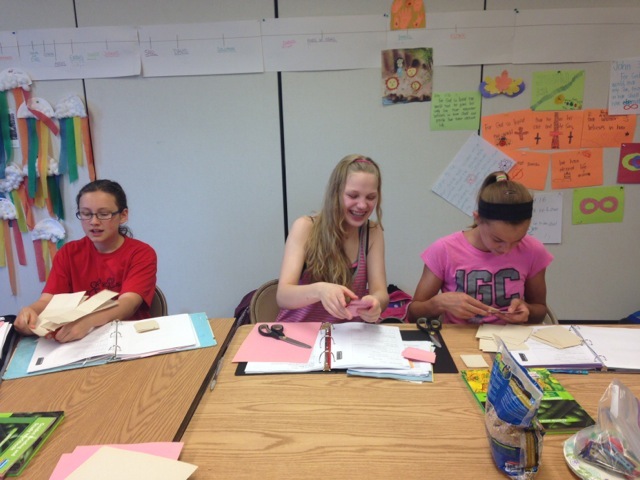
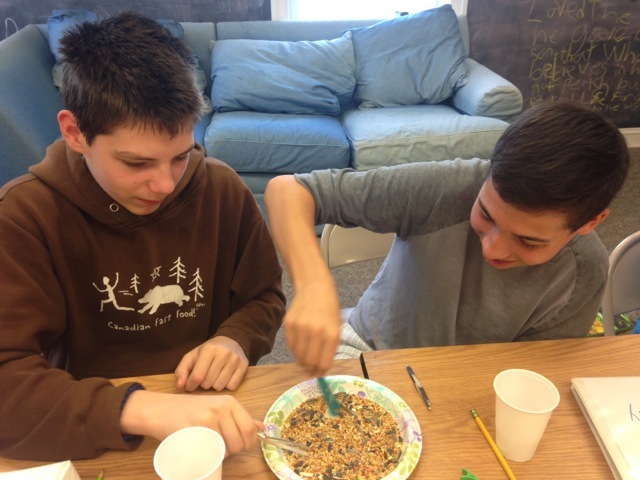
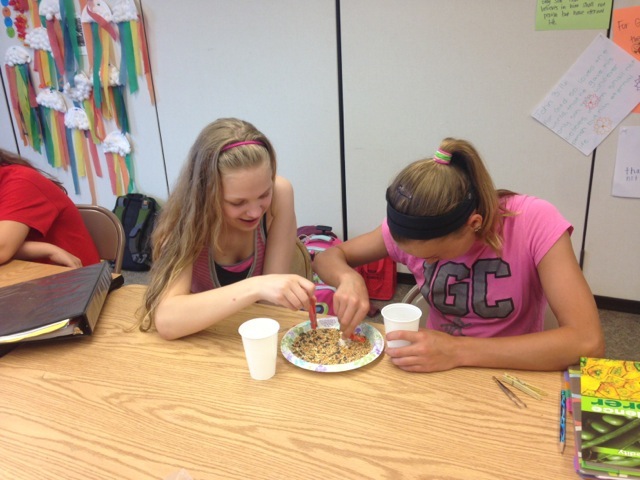
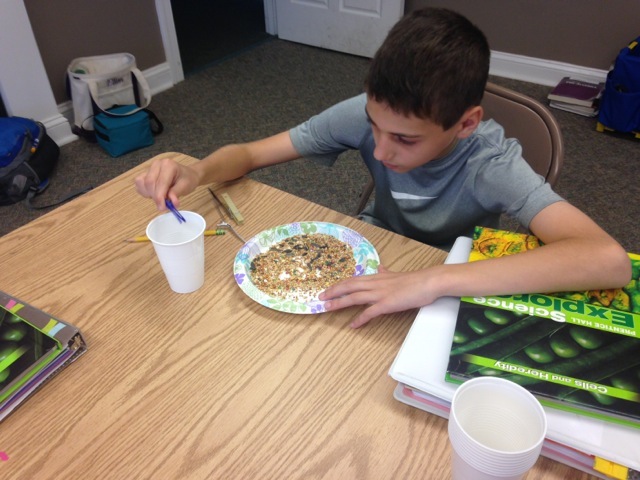
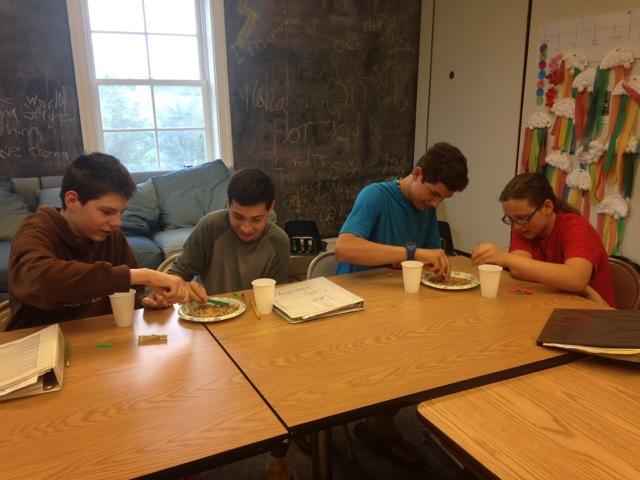
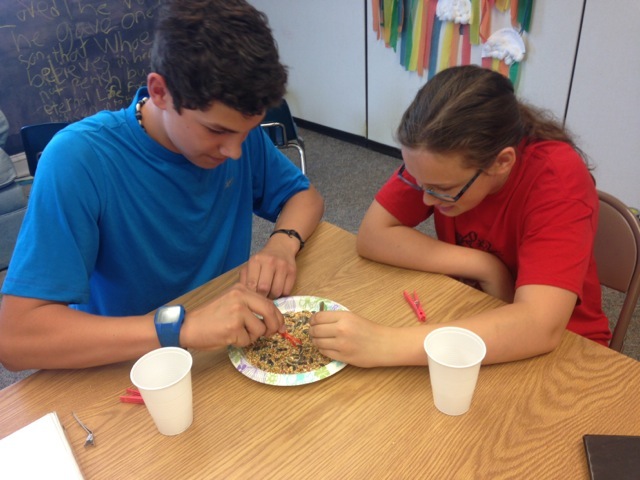
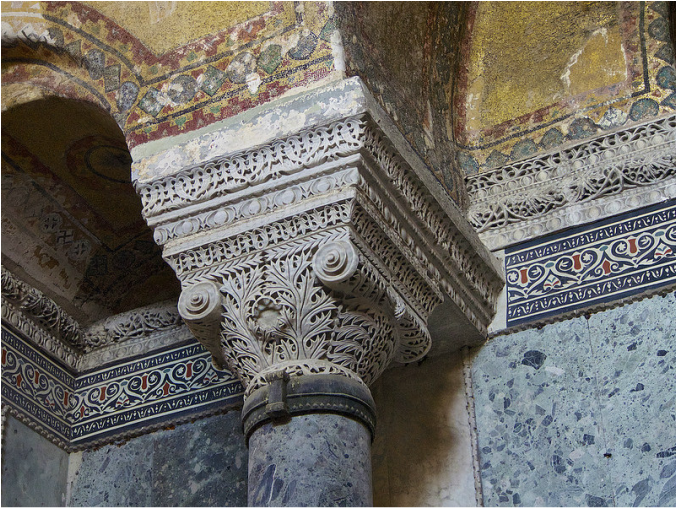
 RSS Feed
RSS Feed